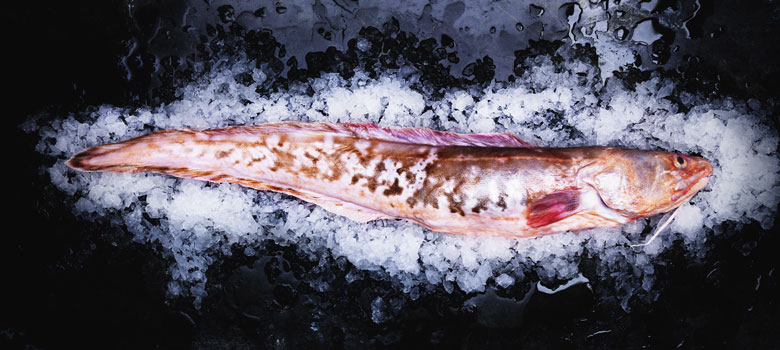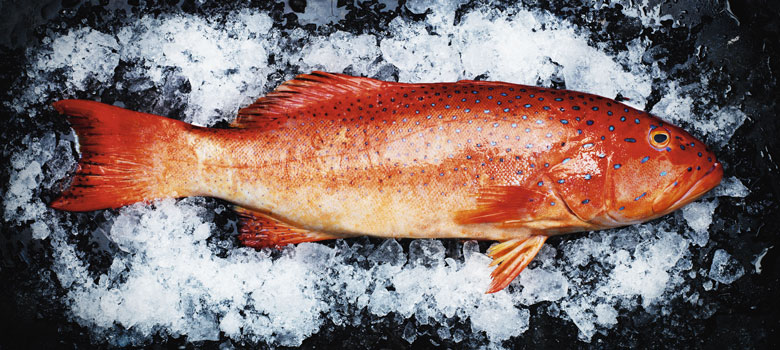
Food
Sustaining our Seafood
The sustainability of our oceans and its seafood has never been more important. Here Selector explores six species that are not just sustainable, but versatile and nutritious.
Building sustainability in our seafood stocks is a balancing act that requires creating long-term harmony between species populations, our nutrient needs, the industry that delivers it, and the environment.
This juggling act requires harvesting vast amounts of data, so that informed and constructive consultation and decision making take place to ensure sustainability. The collection role falls to the Fisheries Research Development Cooperation (FRDC), an industry and government body which, since 1991, has been keeping an eye on our seafood picture to create SAFS: “Status of Australian Fish Stock,” a rolling measurement that tells us what is sustainable and what is not.
This report includes stock population assessments and supportive scientific evidence alongside biological, commercial and the environmental factors that play a role on the impact of each species and fishery. The reports are consistent, transparent and reference everything that interested parties need to understand the sustainability of our seafood in Australia.
Managing all the parts involved is complex, but one of the most involved is consumer education and awareness.
“One of the challenges is actually recognising we are doing a pretty good job,” explains Crispian Ashby, GM of research and investment at FRDC. “Australia often gets painted with more of a northern hemisphere brush that isn’t accurate or fair.
“We’ve got a huge body of water under management, but we have a small population and a small commercial footprint relative to Asia, America and Europe. In saying that, we do have some species and stocks that are of concern, but what we do well is once we recognise we have a problem, we can make the changes to reverse it.”
One of the success stories is the now ‘sustainable’ status of Orange Roughy from the Cascade Plateau and Eastern Zone Fishery of Tasmania, and Western King Prawns from the Spencer Gulf. Both species were deemed ‘at risk’, however, through data collection, assessment, communication and consultation, both industries took greater responsibility for increased monitoring, including closing and opening of certain grounds to increase population growth. Now the Orange Roughy and King Prawn populations are not only improving, but are also sustainable.
Better Choices
Australia has one of the most sustainable fishing industries on the planet and making better choices about what we buy and eat has the biggest impact on our system. From demand to pricing, the species we choose and how we prepare and eat them have the largest influence on the big picture.
Technology has certainly improved our access to information and through this we are becoming more and more aware that all food production has an impact. Apart from choosing species that have been nominated as sustainable, we are in a position to rethink the way we approach the preparation and treatment of each species. This help ensures we are minimising waste, increasing the value of our seafood systems and getting the full potential out of all our seafood, not just the prized, often expensive species.
One chef who is leading the world in this regard is Sydney’s Josh Niland, owner of Saint Peter, an acclaimed fish-only restaurant and fish butchery located on Oxford Street, Paddington.
Josh is pioneering a ‘nose to tail’ approach that has seen him reinvent not just the handing and preparation of seafood, but also featuring parts of fish that are normally discarded and using undervalued species in new and inventive ways to elevate their value and taste.
Josh’s innovation has helped us rethink seafood to have a new conversation about what and how we eat. It’s a great time to explore and try fish and seafood we would normally walk past. Here’s a list of six sustainable species to explore and experiment with.
Australian Sardines
Sardines are often thought of as bait however, they are one of the most sustainable fish available and from a flavour perspective, one of the most undervalued.
Sardines are wild caught all over Australia, are very well priced and often overlooked because of the work required to prep them, but if you put a little effort in, you will be rewarded. Highly popular in Europe as a cornerstone of the Mediterranean diet, Sardines are ultra-high in omega 3, are incredibly versatile and packed full of flavour. When bought whole, fresh sardines can be pan fried, barbecued, crumbed, baked, or grilled and require very little cooking.
Gould’s Squid
Gould’s Squid is part of the Ommastrephidae, or flying Squids family. Being a short lived, highly productive species, these marine cephalopods are very resilient and highly sustainable. The backbone of salt and pepper squid, Gould’s Squid is the most caught squid in Australia and when fresh, is considered one of the best squid to eat.
From sashimi to frying, the cooking potential of Gould’s Squid is endless, there is little waste as most of the squid is edible and when cooking larger squid hoods, the flesh can be tenderised with kiwifruit and papaya in milk for 2-4 hours before cooking.
Pink Ling
This sustainable fish is available as wild caught and is found along the southern coast of Australia, from Port Macquarie to Perth and around Tasmania, in ocean waters on the continental shelf and upper slopes to 800m in depth.
Pink Ling is highly popular as a filleted and prepped fish because of its firm flesh and big boneless fillets. At market, however, fresh and whole Pink Ling often gets looked over as it is eel-like with a dappled orangey-pink skin that does not look like a fish.
Often seen as a great alternative to European Cod, Ling is highly versatile as its flesh can hold its shape under heat. Ling holds its moisture and can be barbecued, grilled, fried, stewed or roasted.

Balmain Bugs
One of the real treats of the ocean, the crustacean we call ‘bugs’ is actually a group with four species within it.
Balmain Bugs or ‘Ibacus peronei’ and its cousins Smooth Bug, Honey Bug and Deepwater Bug differ from Moreton Bay or Bay Lobster bugs in that they are Fan Lobsters and have shorter bodies and their eyes are together on the top of their head rather than on the side.
Balmain Bugs are sustainable, wild caught and live mainly on the continental shelf from Fraser Island around the coast to Geraldton, WA. More like Lobster in flavour than the Moreton Bay bugs, Balmain Bugs are best charred gently on the barbecue with garlic butter.
Coral Trout
One of the prettiest and most prized reef fish, Coral Trout, or Coronation Trout is one of most delicate, fine flavoured and fleshed fish in Australia.
As a species, they are a large and complex group with many variations that range from Common Coral Trout, to Passionfruit Coral Trout and to White-edge Coronation Trout. As a reef fish, they are caught in tropical waters in QLD, NSW, WA, NT and are popular with recreational and commercial fishermen, with numbers abundant and sustainable.
Despite this, the Coral Trout is a species to keep an eye on due to increasing sea temperatures having an impact on coral and reef health.
The Coral Trout’s skin colour makes it ideal for roasting or baking whole, but can also be steamed, panfried, grilled or barbecued.

Ocean Jacket
Like the humble Sardine, the Ocean Jacket, aka Leather-jacket, is one of Australia’s most sustainable and underrated fish. Once maligned for the sand-paper like skin and spiky dorsal fin that used to get in the way of more-prized species, the Leatherjacket has beautifully sweet flesh and few bones.
Ocean Jackets are easy to prepare and beautiful to eat pan-fried, gently baked or steamed. Think butter, garlic capers and good white wine.
To check on the health of each species before you buy, download the SAFS app (fish.gov.au/app).
Read more about preserving our Australian seafood - especially our beloved prawns!